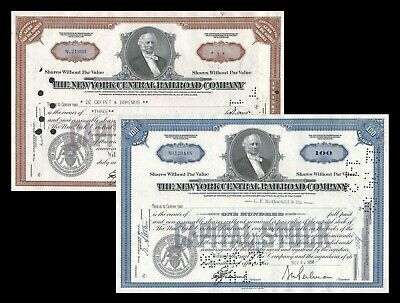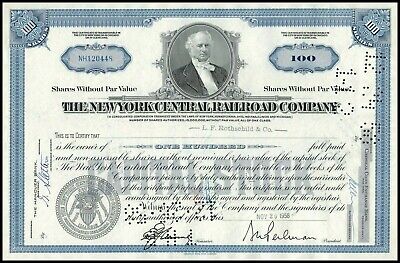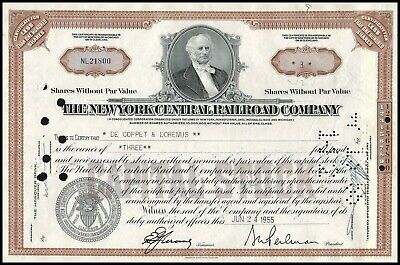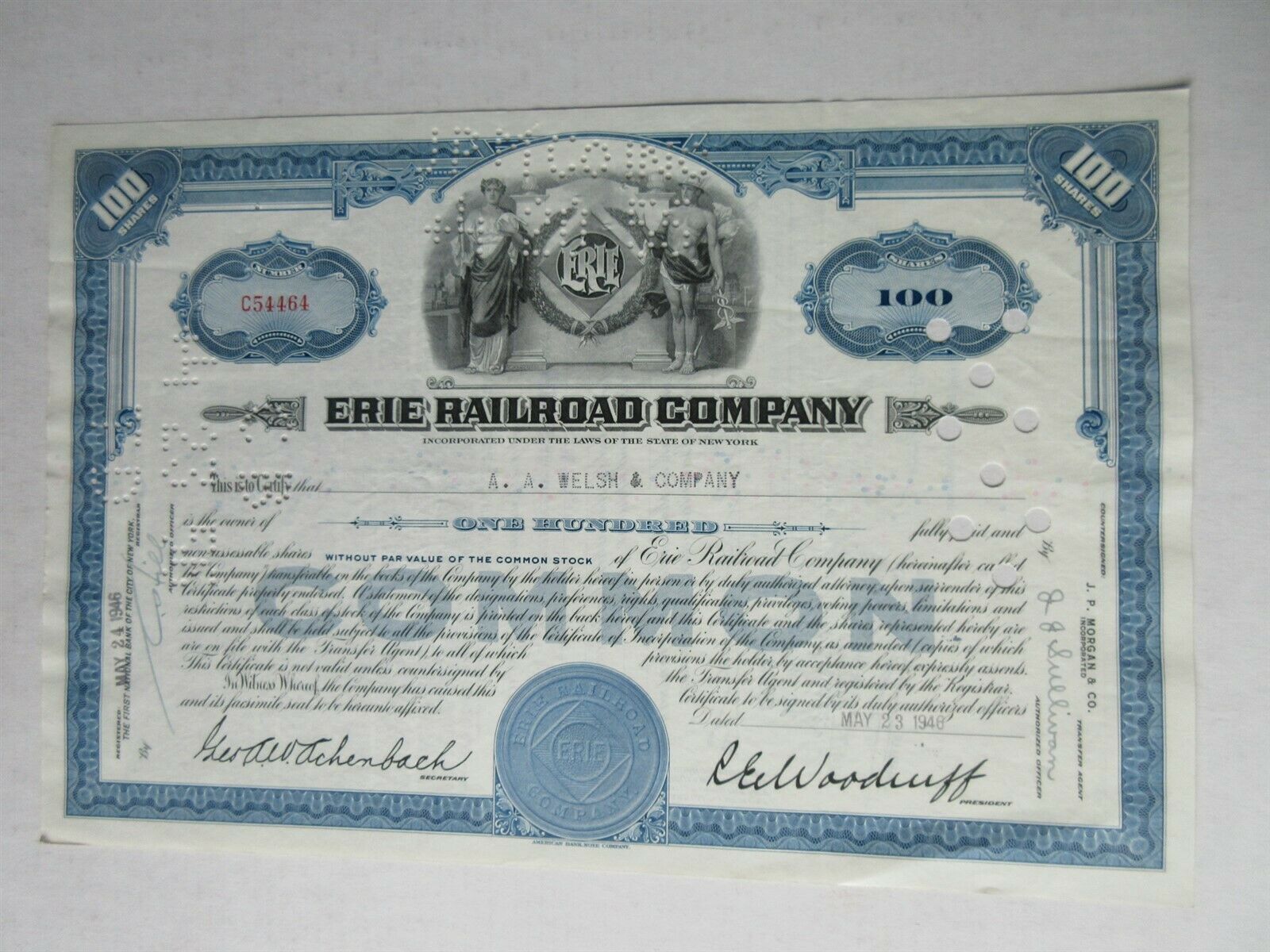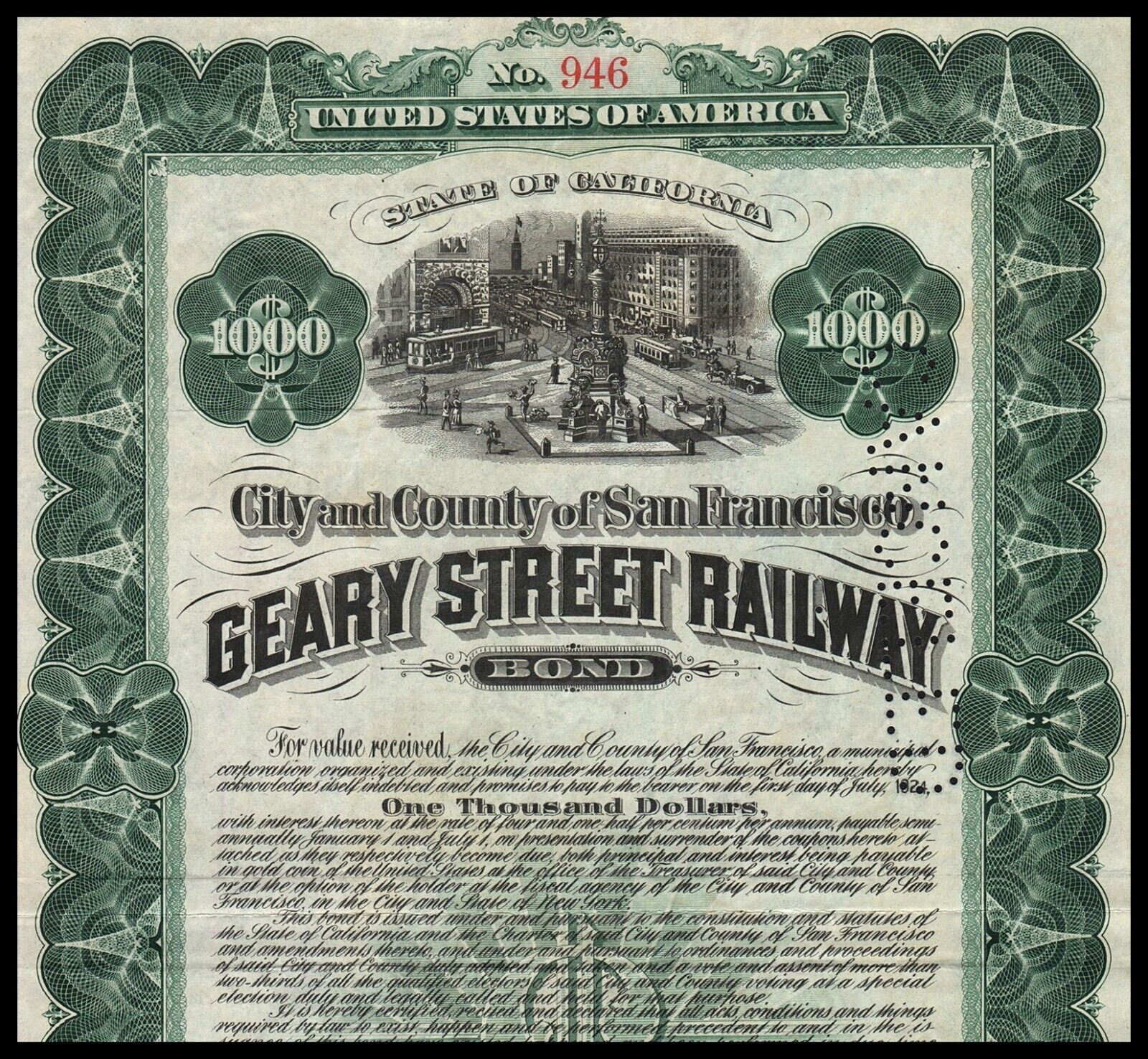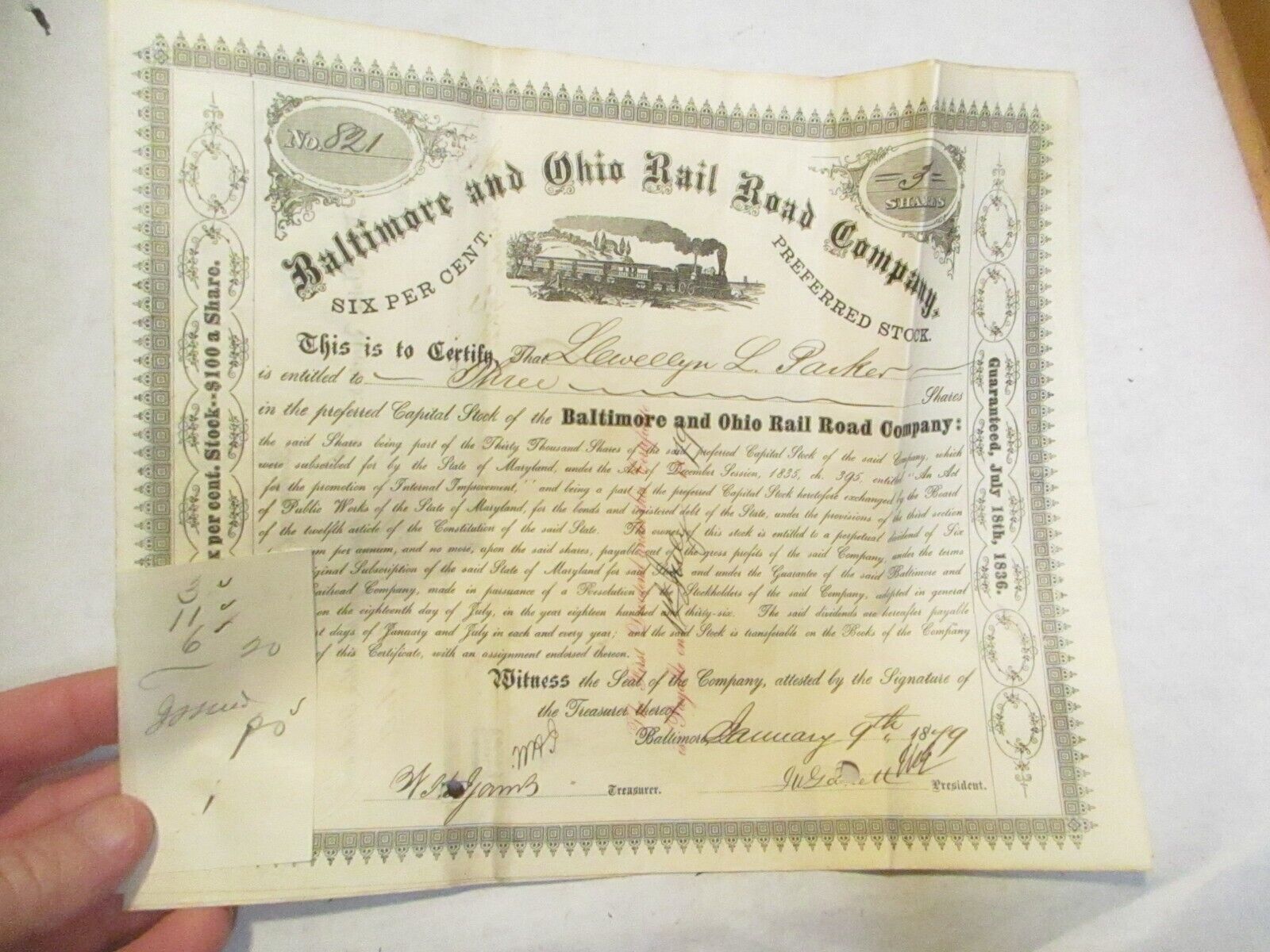-40%
New York Central Railroad 1950s Multistate Seal 2 Piece Stock Certificate Set F+
$ 1.57
- Description
- Size Guide
Description
The New York Central Railroad CompanyTwo Piece Common Stock Certificate Set 1950s
Historic New York Central Railroad Stock Set Over 50 Years Old!
-- Traditional Multi State Seal 1914-1960 --
In this lot you get a two color set of stock certificates of the NYC RR dating from the 1950s, with vignettes of the company founder, Cornelius Vanderbilt. Printed by the American Bank Note Company on heavy certificate bond, these are crisp clean pieces which have been hand selected for their display quality.
STOCK UP and Save on Shipping!
Pay shipping on the FIRST Buy-It-Now lot and all other Buy-It-Now lots ship free!
Included in this lot are:
One certificate in blue for 100 shares.
Cox Catalog number: NEW-530b-S-66 ic
Condition: Fine
One certificate in brown for less than 100 shares.
Cox Catalog number: NEW-530b-S-65b ic
Condition: Fine
Certificate features: Multistate corporate seal, no par value. Facsimile signatures corporate officers. Hand signature transfer agents.
The New York Central Railroad Company came into corporate existence by acts of Consolidation in December of 1914. The new consolidated firm consisted of the New York Central Railroad Company, the New York Central and Hudson Railroad Company, The Lake Shore and Michigan Southern Railway Company and nine other lines. It was incorporated in the states of New York, Michigan, Indiana, Illinois, Ohio and Pennsylvania. These certificates bear that multistate seal.
In 1960, for tax purposes, the New York Central Railroad Company re-incorporated itself in the state of Delaware. This required that the corporate seal be redesigned and those certificates bear the seal of Delaware, alone. The Central would exist under this, its final corporate structure, for a mere eight more years prior to its merger with the Pennsylvania Railroad.
An example of the vignette -
Printed on crisp certificate bond paper by the American Bank Note Company. The certificates are in Fine condition, still crisp, and do not have any distracting rips, tears, seps, or heavy ink cancels on the face of the stocks. They have been punch and/or stamp cancelled, and while not discolored or heavily toned, will have the usual staple holes from transfer slips. Folds and/or creases from handling are slight and do not detract. All staples have been removed, as have all attached transfer slips.
This item was hand selected for its display quality from among literally
thousands
of certificates and is nothing like some of the dreck that you'll find on eBay.
Names and dates will vary - but the Quality, will not! ---
Please see my
Other Items
for more, and be sure to add me to your
favorites list
!
Thumbnail History...
The Central was originally an upstate New York line paralleling the Erie Canal, and was itself a consolidation of ten smaller railroads built as feeder lines for the canal. In 1853 Erastus Corning, a prominent merchant and politician of Albany, brought these lines together providing for direct and coordinated rail service between his city in the East, to Buffalo on the shores of Lake Erie in the West.
In the early 1860s shipping magnate and Wall Street manipulator extraordinaire 'Commodore' Cornelius Vanderbilt came to control the Hudson River Railroad. The line ran from New York City up the Hudson River north to the state capital at Albany. Always a visionary, even at this late stage (he was in his 60's at the time,) in his life, Vanderbilt saw the potential for a direct rail line linking the port of New York with the state's western hinterlands - and the lake port of Buffalo.
In 1867 Vanderbilt acquired control of the New York Central by allowing it to be - literally - frozen out of New York City. In 1866 the Commodore, who had been accumulating Central stock, made overtures to the Central for its acquisition. His offers were rejected. Not easily deterred, he switched tactics.
Despite the rail link between Albany and New York City, traffic during the summer months still largely moved by river boat on the Hudson. It was cheaper, and at the time, more reliable. In the winter when the river froze over, a connection with Vanderbilt's Hudson River railroad was employed to forward the traffic.
In January of 1867 while upstate New York was in the grip of a blizzard, Vanderbilt opened the next phase of his truly hostile take-over bid; Using an old state law as his pretext (which was written originally at the Centrals' behest to prevent competition in its region,) he abruptly ordered that all of his trains stop on the near side of Hudson, and not make the interchange with the Central on the other side of the river - the crossing of which by rail was forbidden by this dubious and double edged statute. This inconvenience forced struggling Central passengers and its freight, to be trudged an extra 5 miles through the frigid winter wonderland of ice and snow in order to make the rail connection to New York City.
The results were predictable: traffic on the Central was cut, stockholders were alarmed, and in December of 1867, Vanderbilt was in control. Two years later the Central and the Hudson were officially consolidated as the New York Central and Hudson River Railroad Company.
In the late 19th Century the NYC ranked among the top five corporations in America, and it would remain in the top five transportation companies right up until the bitter end. Some of the companies it either owned or exercised control over during its heyday were: The Pittsburgh & Lake Erie, the Michigan Central, the Boston & Albany, the Chesapeake & Ohio, the Big Four (CCC&StL), the Nickel Plate (NYC&StL), and the Baltimore & Ohio Railroad.
Prior to World War I and following an acquisition orgy in the 1880s and 1890s the Central moved to streamline its operating structure and provide some protection against the Progressive era legal reforms that were then being directed at the railroads. This final consolidation in 1913 created the New York Central Railroad Company.
After World War II, its fortunes waned; in 1968 it merged with its long time rival the Pennsylvania Railroad to form the ill fated Penn Central, which went bankrupt in 1970. Six years later with most of the rest of the Northeastern rail system in bankruptcy, Congress created Conrail out of six of the failed companies, and the last vestiges of the NYC were wiped away.
In another one of those strange twists of fate, with the 1998 sale of Conrail to CSX Transportation and the Norfolk Southern companies, the remains of the NYC would be divvied up between the successors to most of the railroads that it had once owned. The wheel had come full circle.
As per eBay rules: These obsolete stocks, bonds and financial instruments, are sold as collectibles
only
. Unless otherwise stated, each item has been punch and/or stamp cancelled. Again, unless otherwise stated, all items will grade at FINE or better. Illustrations provided for reference only; except where noted, actual items may vary.
BILLING, PAYMENTS & SHIPPING
PLEASE NOTE:
This is a
SELF SERVE AUCTION
. If you're a successful bidder, the only e-mail you will receive regarding this lot will be generated through the eBay system. Applicable shipping discounts for multiple purchases, etc. can be totaled through the eBay Check-out service which is HIGHLY RECOMMENDED for you to use. Payment is expected within TEN (10) days, including weekends. If payment is not received within that time, the item will be re-listed, and appropriate feedback will be left. POSITIVE feedback will be left at the successful conclusion of this sale.
DOMESTIC U.S. SHIPPING
: This item ships safely packaged in
FLAT
condition via USPS First Class Mail.
YES! Will combine multiple lots -
except where noted.
INTERNATIONAL SHIPPING
: This item ships safely packaged in
FLAT
condition via USPS International Mail. Rates are calculated by the eBay system.
YES! Will combine multiple lots -
except where noted.
BID WITH CONFIDENCE!
DOING THE eBay THING SINCE 1997
>
